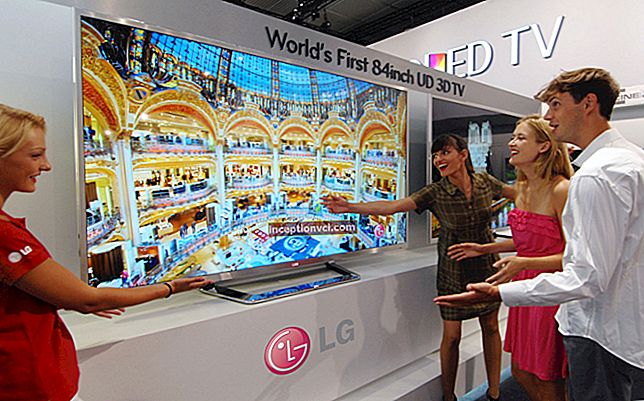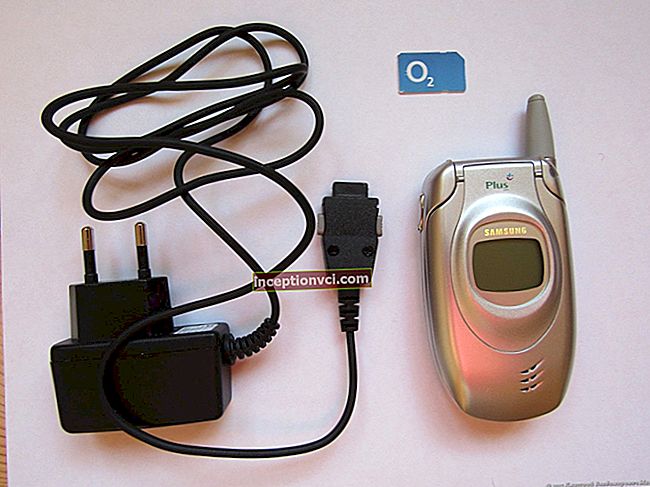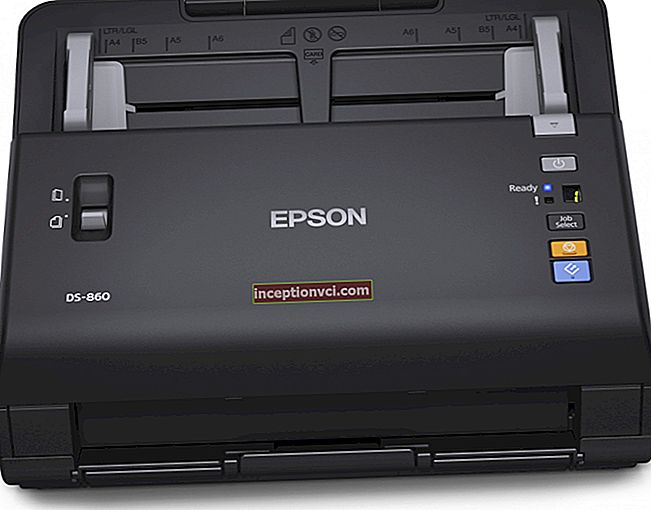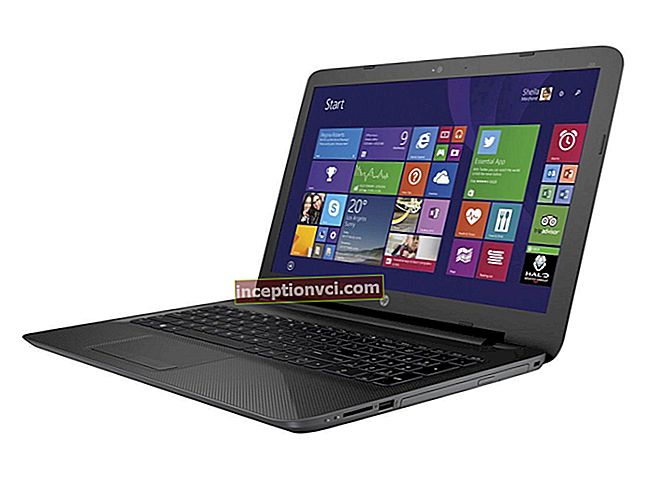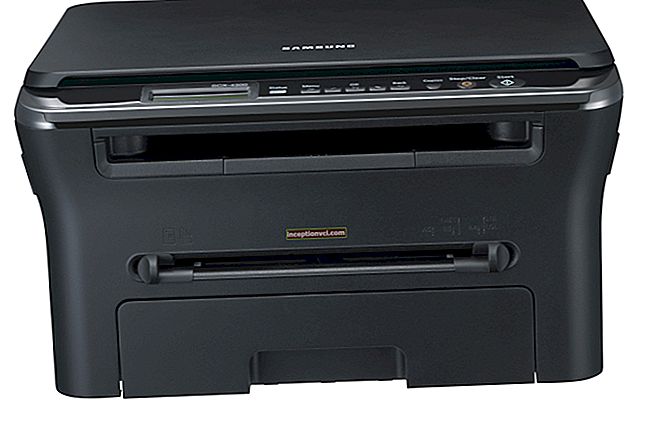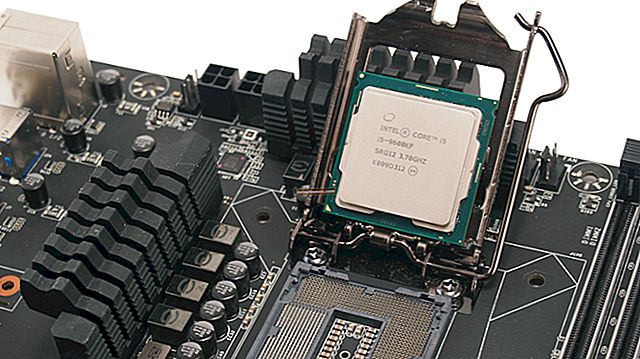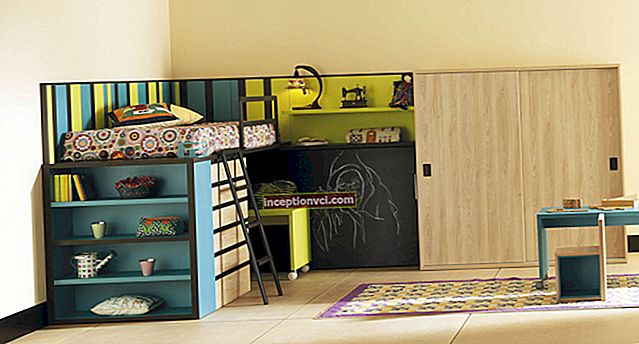How do you imagine a “smartphone” type mobile phone ?! Answering this question, everyone will be guided by existing stereotypes, which are very difficult to change. Of course, this is a large-sized device with a large screen and a high cost. But apart from all this, manufacturing companies have different approaches to creating such a phone. Some make more affordable prices, while for the rest it is also important to endow their product with some distinctive features so that it can compete in the sales market. Nokia has taken this issue in its own way, which is evidenced by all its successful and not so successful attempts. For example, at first consumers were offered "inexpensive" smartphones, but they were repelled by their size. Further, an inexpensive gaming smartphone N-Gage was also created, but it did not attract attention due to the standard design and functions. Now the situation has changed significantly and the smartphone is no longer prohibitively expensive. Therefore, the next step of the company on the way to success was cooperation with Freescale. What did it give? A reference design was created, or, more precisely, a platform that allows you to create inexpensive devices. The first product based on this innovation was the Nokia 6290 smartphone, made in a folding form factor with a relatively small size and costing 320 euros. Having seen good results of cooperation, Nokia did not keep the consumer waiting, creating for him the smallest, lightest and most inexpensive smartphone with good functionality. Although, the model itself is positioned on the market primarily as an ordinary phone with a wide range of various functions.

Design and ergonomics
- Nokia 6120 Classic does not seem to be anything special in its stylistic characteristics, but nevertheless, it has its own peculiarities:
- - easy to use (hold in hand, pocket or purse). This feature speaks of compactness, which is provided by a low weight (only 84 grams) and thickness;
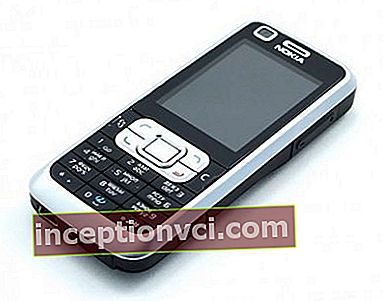
- - the model is made of plastic of various textures (for example, the front and back panels are glossy)
- and colors (black, white, beige, pink and blue), the main of which is black. The frame of the device, consisting of side surfaces, is made of hard matte plastic of great thickness. The battery cover is made of thick, glossy plastic;
- - well and high-quality assembled: the parts are tightly fitted to each other, the device does not creak when squeezed, the control elements respond clearly to pressing, the backlight breaks through the small gaps between the numeric keypad buttons, the body and the volume keys, camera start, memory card slot. But there are some remarks, for example, that the user needs to make efforts when removing the battery compartment cover, because it has a vertical backlash and does not fit snugly against the body;
- - the frame around the case is metal, matt (this makes scratches invisible), which makes the phone durable and shock-resistant.
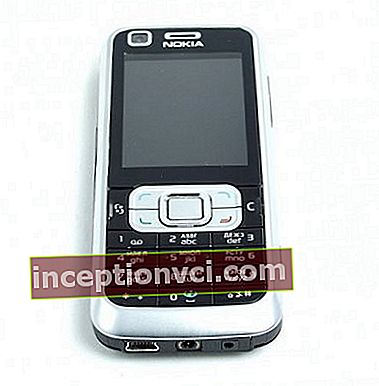
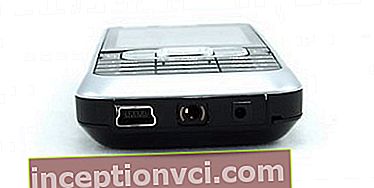
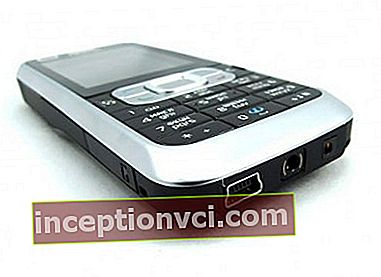
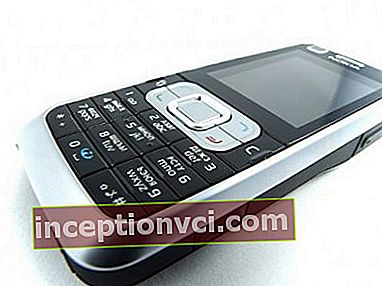
- It is interesting to consider the elements of the case, each of which has its own place and together make up a single whole of the phone's design. So this:
- - paired volume control button, camera launch / shooting key - details of the right side surface;
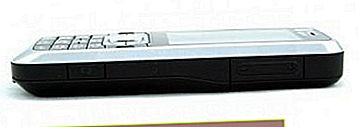
- - connectors: miniUSB, 2.5 mm mini-jack for connecting a headset, slim charger connector - elements of the bottom end;
- - button for switching off / changing profiles, edged with a thin orange rim - a component of the upper end;
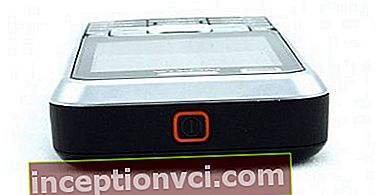
- - a slot for memory expansion cards, covered with a plastic flap, as well as a polyphonic speaker - a part of the left side of the phone;
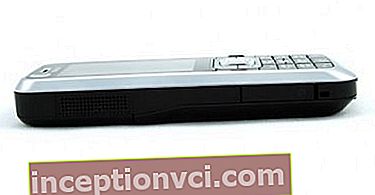
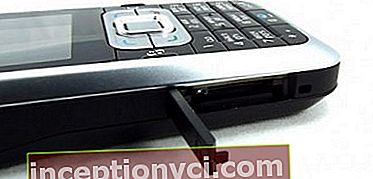
- - there is a small protrusion on the battery compartment cover, the main purpose of which is to prevent the glossy material from touching the table surface in order to avoid the rapid appearance of scratches.
Keyboard
The layout of the keyboard elements is standard, consisting of a block of numeric buttons and a control block. As for the first one, everything is quite simple here, but with regard to the second one, it is not very conveniently arranged: the buttons are purchased, two soft buttons, instead of being located at the edges of the screen, are located closer to the middle, and the call key occupies the extreme positions menu and delete key. The consequence of this is the possibility of accidentally pressing the wrong buttons. The 6120 Classic does not have additional buttons that we know from other smartphones (multimedia key, edit button). The keyboard unit is backlit in white with a slight pink tint. Due to the fact that there is no light sensor in the device, the backlight intensity is always at the same level.

Battery and other devices
The phone has a BL-5B 3.7V battery with a capacity of 890 mAh, which works differently in different conditions. For example, in talk mode, the phone's battery lasts for 3.1 hours (GSM) and 2.4 hours (WCDMA), and in standby mode - 9.5 days, under medium load conditions - about an hour of talks, two to three hours of listening player, up to an hour of work with the camera and use of other functions. The set of the device also includes an HS-47 headset. As for the adapter, the 6120 Classic is best suited to the AD-44 adapter, but unfortunately it is very rarely sold separately from phones.

Screen
- Considering the screen, you need to talk about its individual characteristics that make up the overall image. And so, this:
- 1) size - 31x41 mm with a diagonal of 2.0 inches;
- 2) execution - by TFT technology;
- 3) viewing angles of the display - large, the information is well read;
- 4) the brightness level of the image is high;
- 5) supply - a mirror substrate that ensures the visibility of information in bright sunlight, framing the screen with glossy material;
- 6) backlighting - determined by user preferences;
- 7) details of the screen - above it there is a peephole of the front camera for video calls and a hole for the earpiece.
- 8) Ability - Displays up to 16 million colors and shades.
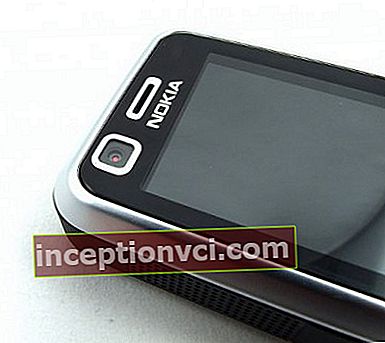
Communications
The level of communication in the phone is provided by several details or functions: the presence of a USB connector, an adapter, a Bluetooth function, as well as networking. Let's take a look at each detail in order. The Nokia 6120 Classic has 3 connectors (standard - 2.0): miniUSB for connecting a cable (miniUSB connector is located at the bottom of the device, the cable is included in the bundle), 2.5 mm HS-47 headset and a slim connector for a charger. An adapter for a phone from 2.5 mm to 3.5 mm to a standard connector can be found both from the original and from another manufacturer. As for the Bluetooth function, it is 2.0 + EDR version that supports the following profiles: Dial-up Networking Profile, Object Push Profile, File Transfer Profile, Handsfree Profile, Headset Profile, Basic Imaging Profile, SIM Access Profile and A2DP (this profile allows you to use a wireless stereo headset). The speed of data transfer via Bluetooth reaches 130 Kb / s, and the time of visibility to other devices is from a minute to an hour.
Next, let's pay attention to the work of the phone on the network. It can work in EGSM 850/900/1800/1900, WCDMA / HSDPA 850/2100 networks, moreover, the HSDPA support is one of the key features of the device operating in 3.5 generation networks. In parallel, Nokia 6120 Classic supports Mass Storage mode, PC Suite, modem connection, disk storage. When connected as a disk drive, the 6120 Classic does not go to the offline profile, the functionality of the phone remains available. An adapter from 2.5 mm to 3.5 mm to a standard connector can be found both from the original and from another manufacturer.
Performance
The model runs under one of the latest versions of the Symbian operating system, namely 9.2, S60v3 FP1. The device turns on quickly enough, it takes 20 seconds to boot. This means that the speed of a smartphone (a very high level and all operations are performed at the same speed) is very close to the speed of conventional phones.
As for the memory, after loading the system of the device, 20 MB of RAM is available with a total memory of 64 MB.The built-in memory is 128 MB, of which 35 MB are reserved for storing user data. Of course, for demanding consumers, this memory will not be enough, but for those who come across a smartphone for the first time, this drawback will not be so important or not noticed at all. All applications used by the user are closed by pressing the power / hang up key and minimized by the Menu button.
User interface (Menu)
The menu of this model is no different from the rest of the Nokia smartphones. Four menu views, two new 3D views Horseshoe (side) and V-shaped (bottom Menu).
The depth of attachments is not limited, the transition to the submenu (and the return transition to the up level) is carried out by pressing the navigation key or the joystick down or to the right, respectively, the contents of a particular item are displayed with large icons. If the application is currently running and running in the background, then a semicircular icon is displayed in the upper right corner of each item (regardless of whether the icon is responsible for launching one application or is a folder). Also, it is worth dwelling on the active standby mode, because it appeared for the first time in Nokia on the S60 platform. What are its capabilities? So, these are: from five to eight applications for quick launch (depending on the resolution and orientation of the screen), displaying calendar events for the current day, displaying the operation of the player, as well as the ability to turn off if a large amount of information and application shortcuts on the screen is not required by the user. Specifically, in the case of Nokia 6120 Classic, the active standby mode exists in the form of a line of icons (the number is limited) for quick access to 6 applications simultaneously visible on the screen. It is also possible to display an application shortcut not only for a built-in function, but also for a program installed on its own. What is the advantage here? Yes, in that it will not be necessary to call the menu every time and open the corresponding item in order to quickly launch a frequently used application, for example, a mobile ICQ client. In general, due to rendering, when moving from item to item, the rendering speed of menu items and sub-items is slightly delayed.
Speaking of the Menu, it is also necessary to touch upon the issue of the function keys, the set of which is minimal for the Nokia 6120 Classic, because there is no edit button (its function is performed by the button with the hash icon), there are no Multimedia key or Own key buttons that allow access to several favorites or a single application. Last but not least, the S60 platform supports voice control navigation without training, so the phone adapts well to the user's voice. You can activate voice control by holding down the right function key.
Phone book, call service
- Due to the different capabilities of the phone book, the phone has become one of the most attractive devices on the market. You might think, what is there that other phones do not have. Now you will find out in detail. So this is:
- - the number of contacts depends on the amount of free memory;
- - there are 3 fields each with standard labels for mobile numbers, video calls, Internet phone numbers, faxes, email addresses, Internet contact addresses, postal addresses, and one standard field for a pager, first name, last name, note and date. The full name can be in a single copy, like the DR, but the number of all other fields is at the discretion of the user. The postal address field includes 7 internal fields;
- - inherent function of renaming fields;
- - there is a PhotoID and VideoID service, when, when each specific subscriber calls, an image or video in mp4 format will be displayed on the screen;
- - it is possible to pronounce the name of the caller with the built-in synthesizer in the following order: the melody of the incoming call plays (once)> the name is pronounced> the call itself.
- Now for the call list. Calls work as usual - incoming, dialed, missed, placed in a single call list. Switching between different groups of calls is done by rejecting the navigation key. The call log saves information about all calls for a month, and that each event can be viewed in detail.
Posts
- The phone supports SMS, MMS and E-mail.
- Let's start with SMS. Typing is done in the usual way, switching between input languages is done by calling the context menu. The functions for editing text (changing case, switching to entering numbers, copying / pasting text) are performed by the hash key. Switching between different messages is done by moving the joystick or navigation key to the side.
As regards MMS, they have all the same characteristics as SMS plus: support for working with messages up to 300 Kb, the ability to insert images into a message (specifying the size - original, small and large), an audio clip (dictaphone recording), a video clip. The text itself follows either at the beginning of the MMS, or after the nested elements. The address field can contain both the single line to whom the message is addressed, and the "Subject" and "Cc" fields. Also, when creating an MMS message, you can select a presentation in the context menu. In this case, the device offers to choose one of four templates - Picture (slides of images), Video (slides of clips), Thumbnails (slides of 2 images) and Template with a title (each slide has a title). In both SMS and MMS, message delivery reports are stored separately and can be deleted either one at a time or all together. In this case, you can choose for which messages the delivery of reports is required - only for SMS or also for MMS. Well, in conclusion, let's talk about the E-mail function, which is supported by the SMTP / POP3 / IMAP4 protocols. When creating a new mailbox, a special wizard is launched (prompts are displayed, some of the information has already been filled in, all that remains is to indicate the type of mailbox, server type), which greatly simplifies the process. In addition to setting up automatic scheduled mail checking, there are 3 options for downloading email - headers only, maximum size, message and attachments. The download volume also varies from downloading all incoming messages to a certain number of them. It is possible to create and send audio messages. To create them, a large icon is displayed in the text input field, when pressed, the recorder opens and recording begins (about 2.5 minutes).
Organizer
The organizer includes the following applications: Converter (select the type of conversion (list of values) and exchange rates), Notes, Dictaphone and Calculator (the ability to do basic operations with numbers). The alarm clock is multifunctional. Its operation can be configured once for a specific time, or you can set an alarm with a repetition on days of the week, working days, weekly, daily. Any arbitrary melody can be assigned to the alarm clock, according to the user's preferences.
An integral part of everyday life is the calendar, which is inherent in both this phone and many others. It supports four types of display: by months, weeks, days (there is a breakdown of the day by hours) and a to-do list (a list of events and their execution time is displayed, plus information about the number of outstanding tasks is displayed on the screen in standby mode). Also, the calendar offers 4 types of events: meeting, memo, anniversary and business, for which a place (topic), time and (or) start and end date, signal, signal repeat, type of synchronization are selected.
Nokia 6120 Classic provides an opportunity to work in the office by installing the QuickOffice program for viewing Microsoft Office files: Word (* .doc), Excel (* .xls), PowerPoint (* .ptt), which allows you to work with documents of different versions. Also, the phone has the ability to work with an Internet browser, which is based on the well-known project Konqueror.Nokia Web Browser supports everything that is sufficient for full-fledged Internet navigation: HTML 4.01 (full-fledged work with tables, frames, forms), JavaScript 1.5, CSS 1 and 2, RSS. Browser localization includes support for 46 different languages (although not all languages are supported by any phone) and the following graphic formats: GIF, JPEG, BMP, WBMP, PNG. There is also support for audio formats MIDI, WAV, MP3, ACC, EACC +, AMR-NB, AMR-WB, Real Audio. The WEB-page can be viewed in the form of a minimap (while you can move around the page), and the area that will be shown when you switch to normal viewing mode is highlighted with a red frame. The speed of work is very good, however, for the minimap to be displayed beautifully, you will have to wait a couple of seconds. Moreover, there is a setting that allows you to display the minimap at the moment of scrolling the page, over the main image (in this case, the minimap is transparent and helps you understand where you are on the page). The phone has a well thought out service of bookmarks and is quite sufficient for normal operation. There are two types of bookmarks: regular (created by the user by adding bookmarks of any page of his choice to the database) and adaptive bookmarks, which are created based on the user's history of visits to various sites (automatic grouping of several pages on one site). Both types of bookmarks in the form of links can be sent via SMS.
Multimedia: mp3 player, radio
- Features of the player:
- 1) the presence of five preset settings of the five-band equalizer with the ability to create an unlimited number of its user settings;
- 2) the artist / song is displayed in standby mode on the screen;
- 3) various options are available: division by artist, album, genre, etc., repeat songs and play in a split;
- 4) rewind / play / pause - commands that are carried out by pressing the navigation key;
- 5) volume control is performed using the side keys of the case;
- 6) there is the possibility of adjusting the balance, extended stereo sound, bass boost, reverb;
- 7) the presence of the Album Arts function, the purpose of which is to assign an album picture for compositions;
- 8) the headset is connected via a 2.5 mm jack, which is located at the bottom of the phone, which does not create any inconvenience during transportation;
- 9) automatic headphone recognition;
- 10) in MP3 playback mode, the device can work for 10.5 hours;
- 11) the following formats are supported: AAC, AAC +, eAAC +, MP3, MP4, M4A, (SP-) MIDI, AMR, WMA, RealAudio 7,8,10, True tones, WAV, Mobile XMF.
- As for the radio, there is nothing special here - a memory for 50 radio stations, support for a visual service, for operation you need to connect a headset, which acts as an antenna.

Camera
The phone has a built-in inexpensive 2-megapixel camera, standard for smartphones. The focal length of the camera is from 10 cm to infinity, objects that are closer than 10 cm cannot be photographed with more or less high quality. The camera provides acceptable quality in natural light conditions, in the dark the situation is saved by a diode flash. To turn on the camera, you need to press a special key on the side of the body of the device. In the process of work, a small panel appears on the phone screen (it can be hidden, it can be made permanently visible) with icons for quick access to settings, the panel can be hidden, it can be made permanently visible. Additional settings: the ability to switch to video mode, the presence of 3 shooting modes (normal, panorama, night) and 3 flash control options (automatic, on / off). And also - a timer (10, 20, 30 seconds), burst mode, setting the exposure compensation (from -2.0 to 2.0), setting the white balance and the ability to choose one of three effects (sepia, negative, black and white). Movies are recorded at a maximum resolution of 240x320 (QVGA) at 15 frames per second. The video format is MPEG4. The video quality is average.Well, the quality of the pictures is maintained only due to the high quality of the screen itself. The optimal resolution of video clips for viewing on the phone screen is 320x240, under the screen resolution. An additional camera is provided for video calls; it is located on the front surface of the phone and allows shooting 320x240.

Outcome
Having considered the design features, the work of every detail of the phone, let us summarize what makes its uniqueness. Firstly, it is the smallest and lightest smartphone ever to hit the market and is positioning itself as a regular mid-range phone that has high-speed data transfer technology in third-generation networks, HSDPA. Secondly, the device has a powerful hardware platform from Freescale. The main prerequisite for competition with conventional phones will be the price of the device (250 euros at the beginning of sales). The device will be able to satisfy those who were looking for the cheapest smartphone with small dimensions, but this will make up a small percentage of its consumers. The main emphasis in attracting a potential audience was made on the presence of high customization possibilities in the phone (freedom in organizing the menu, standby mode), a powerful phone book, the ability to view office files, high data transfer speed and the presence of various applications. Those for whom all these characteristics are important will make up the majority. And Nokia itself is counting on this, transferring smartphones to the low price segment, making them affordable, while not cutting back on the main features compared to more expensive models, accustoming consumers to the convenience provided by the S60 platform. The analogue of Nokia 6120 Classic in the folding form factor is the Nokia 6290. The models are very similar to each other in terms of functionality and cost on the market. Well, the choice of the buyer already depends on personal preferences in design and form factor.











